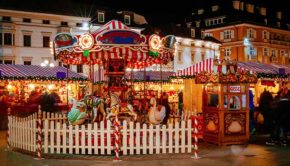Trip Ideas for your holidays in Tuscany – the Palio di Siena
The Palio of Siena is not one of those events held to attract tourists, but rather is the purest expression of Siena’s lifestyle, culture and feelings. Nevertheless, this event is renowned throughout the world and those traveling to Tuscany for their holidays in the periods of the Palio, rarely miss a stop in Siena!
By tradition, the Palio di Siena is held twice a year, on July 2nd – the Palio di Provenzano, in honour of the Madonna of Provenzano, and August 16th – the Palio dell’Assunta, in honour of the Assumption of Mary. This event has very ancient origins: some regulations are still valid since 1644, when the first Palio was disputed with horse races, exactly as it still happens nowadays.
The city’s territory is divided into seventeen districts called Contrade – including Chiocciola, Civetta, Lupa, Oca, Pantera, Valdimontone among others – whose borders were established in 1729 by the Proclamation of Violante of Bavaria, Governess of the city. The race is run only by ten of these districts, the seven which didn’t run the previous year in the same month and three randomly selected. As per tradition, the race is preceded by a parade in historical costumes.
Then comes the moment of the horse race. Each district has a jockey riding a horse on three laps around a track of about 1 Km in Piazza del Campo. Jockeys are often thrown off their horses while circling around the Square, so it is not unusual to see a “scosso” (unmounted) horse finishing the race. However, who wins is the horse, not the jockey and another curious thing is that the loser in the race is considered to be the Contrada whose horse came second, not last.
The winning district receives the Palio – a banner of painted silk – and with it its inhabitants reach Provenzano (for the July Palio) or the Duomo (in August) to sing the hymn of thanksgiving. From now on, every occasion is good to remind the inhabitants of the Contrada on the victory they have earned, until the autumn, when between September and early October, there will be the “victory dinner”, with the participation of thousands of people and a place of honor to the winning horse, true admired hero.
The Palio is a secular celebration which involves locals also without an official coordination by the public administration. The seats in the stands as well as on the windows and balconies overlooking the square are individually managed by the owners, while in the Piazza del Campo is given the opportunity for the public to attend the Palio for free. The latter is perhaps the most exciting way to enjoy the race, together with the merry Sieneses.
Photo by One From RM











